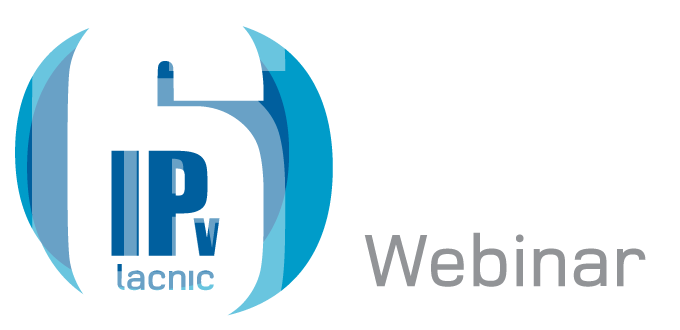LACNIC’s IPv6 Marathon
27/06/2018

To celebrate the sixth anniversary of Global IPv6 Launch and IPv6 Day, LACNIC organized a four-hour webinar to present statistics and examples of best practices, as well as tools and initiatives for the implementation of this protocol in Latin America and the Caribbean.
The talks by the various speakers made it clear that the exhaustion of the global pool of available IPv4 addresses means that the need for lines of action for IPv6 deployment is now more pressing than ever. Four out of the five Regional Internet Registries (RIRs) have already exhausted their available IPv4 address space, leaving AFRINIC (the RIR for Africa) as the only RIR with available IPv4 addresses.
Juan Carlos Alonso, Head of IT Operations at LACNIC, noted that there are more than 20 billion devices connected to the Internet and less than 5 billion IPv4 addresses.
He observed that the most direct consequences of IPv4 exhaustion have been the creation of an IPv4 address market where addresses can be bought and sold at increasingly higher prices, and the difficulties in obtaining IPv4 addresses caused by policy changes in the Regional Registries (RIRs).
Alonso added that one of the most widely used resources to make up for the lack of IPv4 addresses – a mechanism known as Network Address Translation (NAT) – cannot be regarded as a sustainable solution because it has been shown to have many problems. Among the disadvantages of the use of NAT, he mentioned the limitation on the number of sessions, which translates into the customers’ perception of poorer service quality, and the fact that users from different countries can access the Internet via a single IP address, making it difficult to use applications or services (e.g. Google, Twitter, Netflix, etc.)
The use of NAT also gives rise to legal issues. It also makes it more difficult to trace users and makes it necessary to maintain logs specifying the addresses and ports used at different levels of NAT boxes. In this sense, he noted that there are already regulations in force requiring ISPs to track which user was using a specific IP address at a given time, and that this cannot be done when using NAT.
Likewise, Alonso warned that the proliferation of NATs to increase the user/IP ratio decreases the quality of Internet connections, adds complexity to the network and, above all, increases operating costs and makes them more prone to failure.
He pointed out that investments are being diverted to purchasing IPv4 addresses and installing NATs, even though this is “a temporary, expensive and low-quality solution.” For this reason, he believes that organizations should invest in a lasting solution such as IPv6. Alonso also stressed that implementing IPv6 is not expensive compared to the cost of IPv4, particularly if natural investment cycles are leveraged (cost of transfers and CGNs per user).
A boost in IPv6 deployment. The LACNIC expert highlighted that, as of June of this year, 38.2% of the Autonomous System Numbers (ASNs) in the LACNIC region are announcing IPv6 blocks.
However, he noted that the expansion of IPv6 in the region requires substantial deployment in end user access networks (DSL, fiber, cable), mobile access networks (4G, 3G), and local content providers.
Alonso added that organizations should take advantage of the “natural” life cycles of their equipment to acquire IPv6-compatible equipment.
In his presentation, the Head of IT Operations at LACNIC broke down myths such as the one that says that if there is no IPv6 content, there is no traffic. “In a full-IPv6 network, approximately 30-45% of the traffic is IPv6,” said the expert.
He also presented global and regional success stories and cited the example of the Government of Costa Rica, which drafted a national IPv6 plan and achieved very good results, and that of Comcast, an ISP that began its IPv6 program more than 10 years ago with incremental planning and deployment and currently supports IPv6 on its entire network.
Different places, different statistics. Carlos Martínez, Chief Technology Officer at LACNIC, shared current IPv6 statistics for the LAC region. “We have a significant number of countries with more than 5% of IPv6 deployment,” said Martinez, and detailed the list of these countries: Peru, Ecuador, Brazil, Bolivia, Argentina, Uruguay, Guatemala, Mexico, Trinidad and Tobago, and the Dominican Republic.
However, IPv6 adoption is very different in each subregion. Average penetration is 16.96% in South America, 8.77% in Central America and Mexico, and 3.10% in the Caribbean sub-region, while the global average is 18.07%. “It is clear that there are significant asymmetries in our region,” said Martinez.
The webinar presented successful IPv6 actions and initiatives implemented by the governments of Costa Rica, Mexico and Colombia aimed at IPv6 implementation, and offered expert technical presentations on transition mechanisms and IPv6 numbering plans.
Click here to watch the videos and read the presentations.
(Free access, no subscription required)